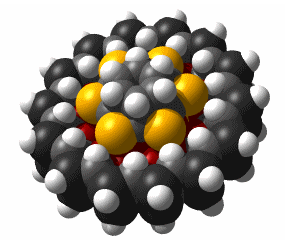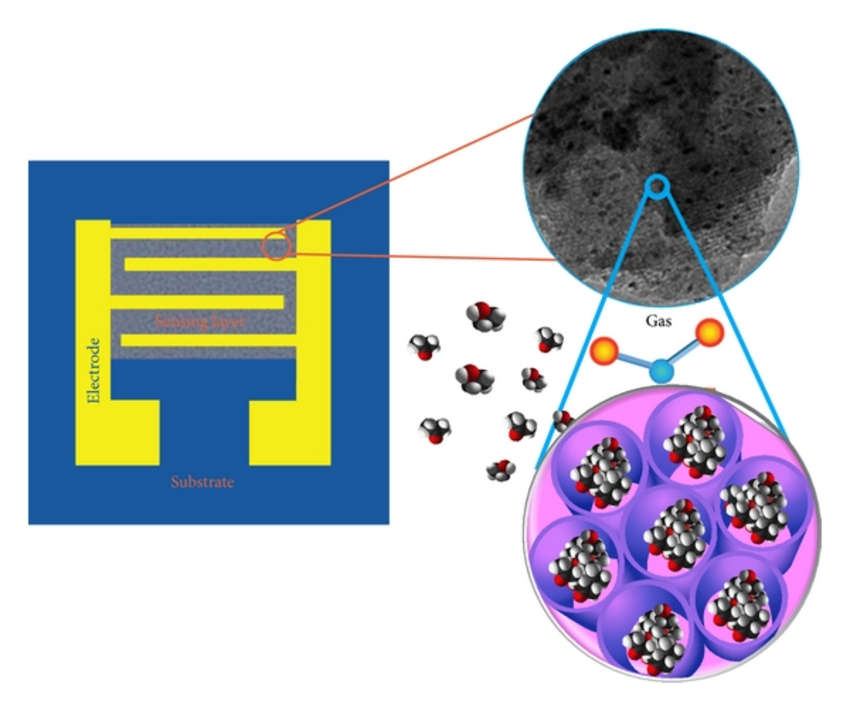Carbon Nano Sensors Based on Carbon Nano Material
Researcher and author: Dr. ( Afshin Rashid)
Note: In these nanosensors, carbon black is dispersed in an insulating polymer, which provides electrical conductivity to the film. In the presence of the desired gas / vapor , the polymer swells and eventually the electrical conductivity / resistance of the polymer changes. Using a suitable solvent, the viscosity of the polymer / carbon black is adjusted optimally and then the polymer is patterned on the surface of the filter electrode.
For the polymer on the electrode surfaces of different ways, such as spin coating and the drop of the applied and dried coating. Changes in electrical conductivity in gas nanosensors in terms of carbon black, Carbon black.
The various properties of carbon nanomaterials, such as optical and electrical properties, have led to the use of these materials to build sensors. Gas nanosensors in which the electric current passing through them is changed due to the presence of the target material. If the amount of carbon black in the nanosensor is low, the composite will be insulated due to the lack of connection between the conductive particles in the composite body. As the amount of carbon black in the polymer increases, the electrical resistance of the polymer decreases exponentially. By increasing the concentration of carbon black and reaching the transfer point, the connection is established based on the penetration limit. In the presence of the desired vapor / gas, the polymer swells and the amount of electrical conductivity / resistance changes, this change is used to identify the gas. In gas nanosensors with carbon nanomaterials and based on electrical conductivity (carbon black)Electrical resistance signals are output from these arrays and evaluated using a standard system. And the aim is to be able to detect the presence of various vapors of organic solvents. This strategy can be combined with various software and hardware systems, and finally the polymer / carbon composite sensors may be delayed in responding to external stimuli due to aging of the polymer matrix or displacement of carbon black particles . Particle displacement or matrix aging causes a diffusion path. This change in arrangement occurs as a result of repeated swelling and shrinkage of the polymer matrix by repeated use of the sensor.
Conclusion:
In these nanosensors, carbon black is dispersed in an insulating polymer to provide electrical conductivity to the film. In the presence of the desired gas / vapor , the polymer swells and eventually the electrical conductivity / resistance of the polymer changes.
Researcher and author: Dr. ( Afshin Rashid)
PhD in Nano-Microelectronics




